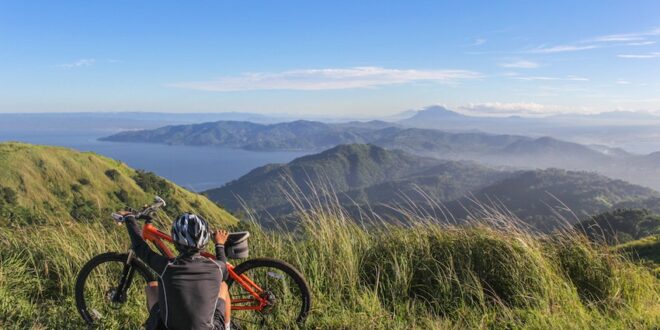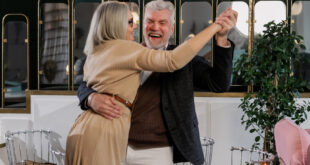The idea of cycling the length of New Zealand must have germinated quietly in the recesses of my mind while I wasn’t paying attention. It is thought the decision to do such a trip is the result of a particularly virulent type of fever referred to as “Blinkus of the Thinkus”.
My friend, Rogers, and I had been taken with the idea of cycling as another means of getting out and about in our advancing years for a casual and very low-key adventure now and then. We had experienced casual bouts of other such things; cycling surely would be simply another little flutter.
I like to think I am not easily shocked, so let me say how ‘surprised’ I was to discover how much extra flesh over the shins is required for cycling. All the flesh I had in that area was used up within the first three weeks of cycling, such was the appetite of those little teeth on the pedals of my bike; for in fact, they were nothing less than the cyclist equivalent of piranhas. In a matter of days my legs would have been more at home hanging in a butcher shop than attached to my trunk.
It also became a matter of concern to me after a ride of say, 50k, which obviously necessitated several hours wedged tightly onto the device referred to as a ‘seat,’ my voice went up an octave. Whereas I formerly liked to try the baritone notes, I now found I was more successful competing with the soprano. Was this a good thing, I wondered?
Despite all of this, there came a time when Rogers and I found ourselves pulling in to the bus station in Kaitaia and unloading our bikes from the baggage compartment.
We had a meal and started on the Kaitaia-Awaroa Road towards Ahipara and the turn-off south towards Herekino. There is a village called Pukepoto five miles south of Kaitaia, but we didn’t see it. It is marked on the map quite plainly, but there is nothing on the road itself, so all the advice I can offer you on Pukepoto is it isn’t there.
The Wainui Junction is also quite plain on the map, but consists only of a small yellow sign pointing south. We learned in the coming miles, what is marked on the map may in fact be nothing more than a sign. How two yellow signs attains village status is beyond me. I think it is simply that mapmakers have a roguish sense of humour. But I could be wrong.
We covered about 30k that first day, and it was easy pedalling until we started up to the summit of the pass in the Herekino Forest. It was becoming dark and we thought it prudent to locate a place to bed down for the night. A bit further on we saw a building up ahead. There was a sign proclaiming it to be a cattle station. This is more like it, we thought, but, strangely, we never saw the building again; it had disappeared. Was it a mirage? Did we, as novice cyclists, now have to contend with witchcraft and optical illusions, as well as fatigue and writer’s block?
We pedalled along in the deepening gloom and within the next couple of hundred metres spotted an abandoned shack off the road and behind a wire-fence gate.
Rogers leaned his bike against a post and started forward to investigate while I closed the gate. These gates are hard to shut. You have to actually stretch the wire, not an easy thing to do. I managed it, with great difficulty, and turned to follow Rogers. But to my surprise he whizzed past me in the opposite direction. “Coupla bulls,” he puffed, thumbing over his shoulder. Rogers hadn’t reckoned on the extra impetus the word ‘bulls’ gave me. I pivoted in mid-stride, passed him easily, and was through the gate and headed down the road by the time he cleared the gate. I wasn’t scared, you understand – I just felt like running.
I took Rogers’s word the creatures were, in fact, bulls, although animal husbandry isn’t his strong suit. From my new perspective down the road, I looked back and sure enough, there was a pair of large and definitely bovine animals staring at us across the grass, chewing on whatever it is they chew on. I didn’t actually see the creatures make a threatening move, but I think they were just being subtle; Rogers always has a reason when he moves fast.
Further along we found a reasonable place under a bridge. We hid our bikes in tall grass and scrambled down another twenty feet or so to a grassy area, spread our air mattresses and sleeping bags, and settled down. We had had a good feed at Kaitaia so could easily forestall hunger pangs with a drink until breakfast next morning at the little village of Herekino.
The possums in our bivvy area provided an element of uncertainty to the night. You never can be sure whether a possum is laughing or crying or arguing or what. That the possums were conducting some sort of forum was certain, though, for their conversation was intense. Exclamations from one faction, followed by quiet rejoinders from another, and unseemly sledging and barracking from those just watching. Then they would switch roles, for it didn’t seem to make any difference to the possums which side of the argument they were on. Either side suited them; my theory is they just loved to hear themselves using big words. But I could be wrong.
We were pedalling again by 0715 next morning, towards Herekino village, where awaited us, we imagined, a sumptuous breakfast on the deck of a colourful bistro. This bistro would overlook the sparkling waters of Herekino Harbour, a waiter in a spotless white apron would attend us, tantalising aromas of Turkish coffee beans would waft to greet us.
Herekino was much closer than we expected, and before we were aware of it we had passed it. Literally. There was no bistro, no sparkling waters, no spotless white apron with waiter attached, no wafting aromas.
Rogers studied the map intently, shocked disappointment in his eyes. “There has to be a mistake,” he said, choking back a sob. “We were going to have breakfast!”
“Steady, partner,” I replied. “Steady. Be strong.”
I dried Rogers’s eyes so he could see clearly to mount his bike, and we carried on.
There are rolling hills with large trees lining the roads for much of the distance into Awaroa. The trouble with these gently rolling hills, so picturesque on postcards and travel brochures, is they are telling lies. In an automobile you press your toe down a quarter-inch, and you are up the hill. On a bicycle it is sweat and exhaustion, and envy for the few 4WD farm vehicles sweeping past.
The ride from Broadwood to Kohukohu could have been by far the most pleasant segment of any ride I’ve ever had to date, except a farmer was shifting his dairy herd to a fresh paddock, and naturally he used the main highway to do it. We caught up with the herd at the bottom of a long downhill stretch. We were going at a pretty good clip, and rounded a curve to see the cow-cocky on his horse waving frantically for us to slow down.
I will forever be indebted to this man, because to slam on the brakes, fall, and skid twenty meters on dry asphalt is unpleasant to a cyclist, to put it mildly. To fall and skid twenty meters in fresh cow-dung is simply mind-boggling; the brain refuses to comprehend such a thing. And these were the most undisciplined cows I’d ever seen. I don’t know what this farmer had been feeding his cows, but the dung was, well, let me put it this way: if cow dung was literature, what we pedalled through was War and Peace, Gone With The Wind, and the Manhattan phone directory all rolled into one.
Rogers and I stretched out full length in the grass outside the bus stop in Omapere and looked up at the passing clouds. We weighed up what we had accomplished over the past two days and decided under the circumstances a bus back to Auckland was the wise choice. We had used up all of our strength and much of our resources; it seemed wise to fall back, re-group, and be ready for the next instalment, whatever form it might take.
One day Rogers and I may go back to Omapere and continue the ride. Then again we may not. But we are certainly not daunted by the prospect, and care little for the opinions of those who embed themselves deeply in the recesses of their recliner, occasionally peering suspiciously over the arm.









awa355 - 9 years ago
What a shame you weren’t able to continue. I would have enjoyed reading more.